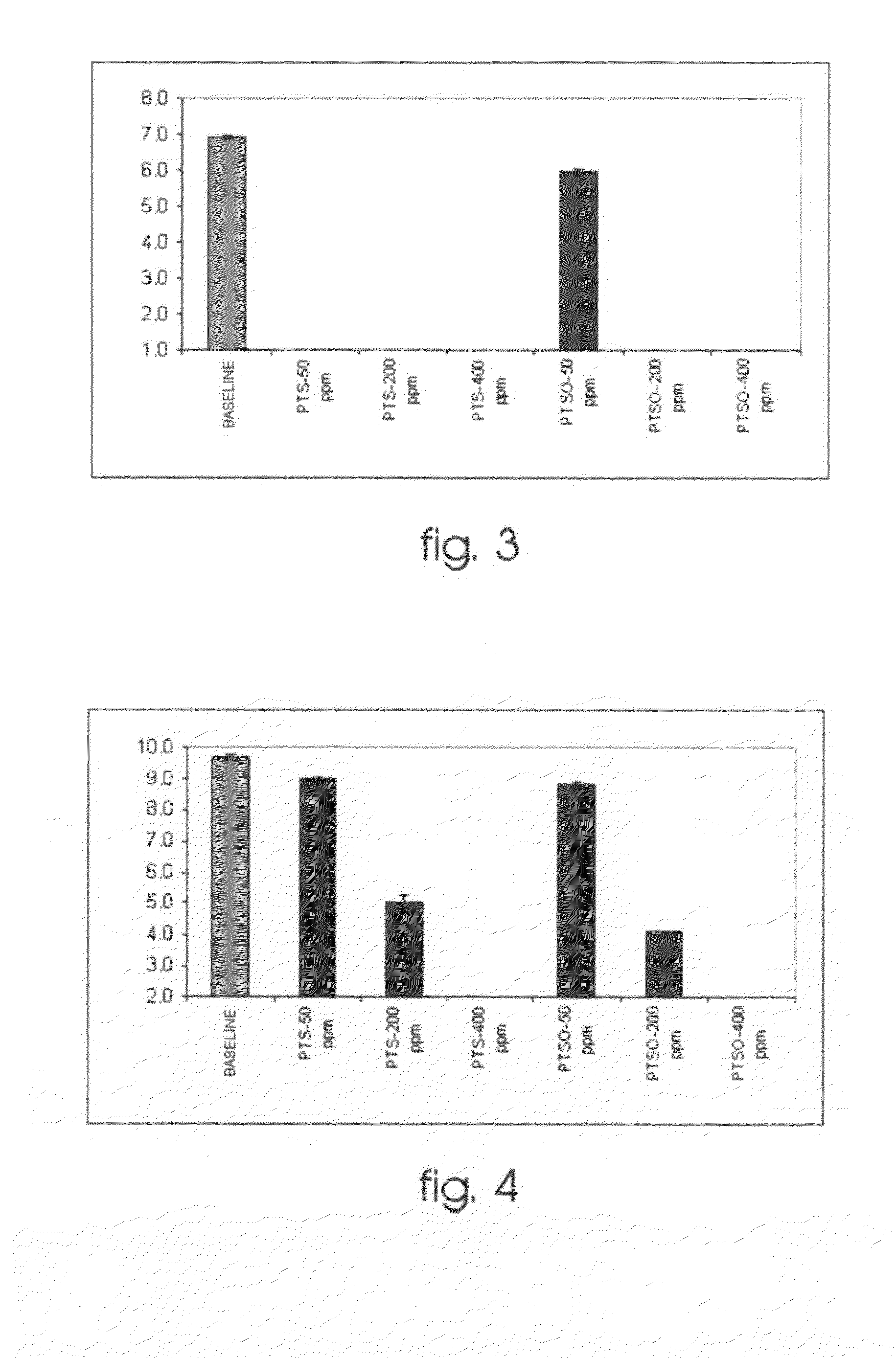Use of an antibacterial compound which is derived from alliaceae, as a natural additive in animal feed
- Summary
- Abstract
- Description
- Claims
- Application Information
AI Technical Summary
Problems solved by technology
Method used
Image
Examples
example 1
Study Conducted on the Porcine Digestive Microbial Composition
[0059]The number of microorganisms forming the gastrointestinal microbiota in this animal species is very high (>1014 cfu / g) and includes bacteria representative of quite varied microbial groups (enterobacteria in general and coliform bacteria in particular, bacteroides, clostridia, bifidobacteria, lactobacilli, etc., as well as many other aerobic and anaerobic bacteria species), between 400-500 different species having been identified (see for example Vanbelle et al., 1990).
[0060]The effect of the compounds on the composition of the intestinal microbiota of pigs in the post-weaning stage has been studied.
[0061]The dose-effect relation and the optimal dose for the control of harmful microorganisms (enterobacteria, clostridia) without affecting the potentially beneficial microbiota such as bifidobacteria and lactobacilli have been determined.
[0062]The results obtained from the described assays and from others conducted pro...
example 2
[0069]This example shows the results of studies subsequent to those of Example 1, which confirm and increase the information.
[0070]Two of the compounds (referenced as PTS and as PTSO) are assayed in a lower dose range (50-400 mg / L).
[0071]It is demonstrated that a concentration of 50 mg / L of one of the products is able to completely suppress the growth of enterobacteria in general, and of coliform bacteria in particular (FIGS. 2 and 3).
[0072]The bacteroides and clostridia population (FIGS. 4 and 5) behaved in a similar manner in the presence of the different assayed concentrations of the compounds PTS and PTSO.
[0073]The addition of both compounds at 50 mg / L caused a slight though significant population decrease.
[0074]This decrease was more pronounced (approximately 50%) when the concentration was 200 mg / L.
[0075]The addition of any of the two compounds at 400 mg / L meant the disappearance of both microbial groups.
[0076]For their part, the lactobacilli and bifidobacteria groups (FIGS. 6...
example 3
The Effect of Different Doses of the Compounds Object of Study on the Ruminal Degradation of Two Different Diets the Composition of which is in Table 1 is Studied
[0083]The diets consist of alfalfa hay (standard maintenance diet for ruminant animals) or of a mixture of 50% alfalfa hay and a commercial concentrate (standard lactation diet for ruminant animals).
[0084]In vitro incubation is performed using ruminal fluid of goats as inoculum.
TABLE 1Chemical composition of the two experimental dietsDiet D2Ingredients Diet D1Alfalfa hay +Alfalfa hayconcentrate (1:1)DM, g / 100 g Fresh matter92.791.8g / 100 g Dry matterOrganic matter90.590.2Crude protein16.516.6Neutral detergent fiber51.441.4Acid detergent fiber38.227.8Acid detergent lignin9.274.76FM: fresh matter; DM: dry matter; D1: 100% alfalfa hay; D2: 50% alfalfa hay: 50% commercial concentrate
[0085]The major difference between the two diets is based on their content in fibrous components (neutral detergent fiber, acid detergent fiber and ...
PUM
| Property | Measurement | Unit |
|---|---|---|
| Fraction | aaaaa | aaaaa |
| Fraction | aaaaa | aaaaa |
| Fraction | aaaaa | aaaaa |
Abstract
Description
Claims
Application Information
 Login to View More
Login to View More - R&D Engineer
- R&D Manager
- IP Professional
- Industry Leading Data Capabilities
- Powerful AI technology
- Patent DNA Extraction
Browse by: Latest US Patents, China's latest patents, Technical Efficacy Thesaurus, Application Domain, Technology Topic, Popular Technical Reports.
© 2024 PatSnap. All rights reserved.Legal|Privacy policy|Modern Slavery Act Transparency Statement|Sitemap|About US| Contact US: help@patsnap.com










